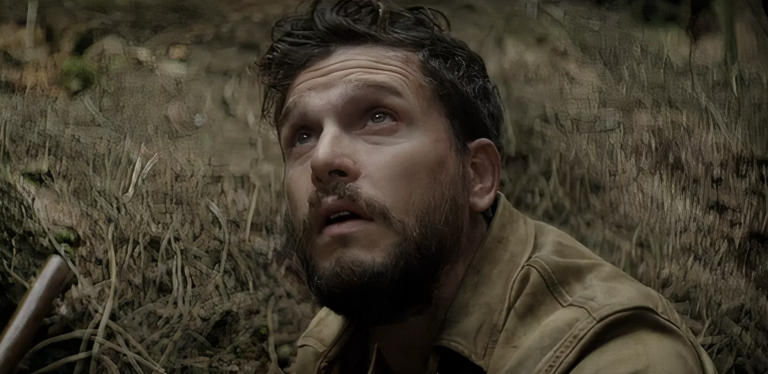Netflix has just released its new true crime docuseries, The Playing Cards Killer. The story originates in Madrid, Spain, where a serial killer terrorized its residents for over a year. His crimes and subsequent arrest became the subject of much fanfare and attention from broadcast media. Many facets of the investigation, including breaking down the killer’s identity and motives, are presented in this docuseries. One can find praise for the makers in how they subvert any singular narration or tangent to dominate the storytelling.
It is grounded in facts, fierce opinions, and an overall social commentary that is worthy to watch. The chilling accounts from the survivors who lost their loved ones are a highlight too. The case of the Playing Cards Killer became notorious in legal discussions. The trial, which is the focus of episode 3, yielded significant takeaways for the community and a lot of fodder for public discourse. There is a spectrum of responses that feature in this docuseries, and in true Netflix style, the series ends on a cliffhanger of sorts.
The Playing Cards Killer is not a story that you watch and rest comfortably. The cold-bloodedness of the crimes and the apparent indifference of the killer we see during the trials is a testament to the inherent darkness of human nature. The extent to which one can be blindsided by it and lose sight of their compassion and humanity manifests in The Playing Cards Killer’s story. We have explained the entire Netflix docuseries for you below, with every episode and every detail about the case. It is advisable for the viewers to watch the series first, as this article contains spoilers.
The Playing Cards Killer (2023) Netflix Docuseries Explained:
Episode 1: “An Ace of Cups”
On 5 February 2003, a bus driver saw a body during the night duty. He was a regular, and the driver knew him from before. The location was Plaza Del Square in Baraja. He was the first documented victim of the Playing Cards Killer at the time. Episode 1 of The Playing Cards Killer features a motley of interviews with journalists like Javier Barroso (crime division of the El Pais newspaper). They noticed how the cleaning crew wiped the entire area clean of any shred of evidence, which made solving the case even tougher back then.
No one had any idea about the presence of a serial killer, nor did anyone notice the playing card next to the body. The victim (Juan Carlos Martin) was an airport janitor. An ace of cups was found at the site but was recorded as regular evidence. Beatriz de Vicente was a criminal lawyer who interpreted the placing of the card at the victim’s feet as a specific message.
Why were the killer’s crimes not given attention at first?
She also recalls Martin Estacio as the first victim near whose body a playing card was found. But the death was shrouded in general city crime. Homicides were an everyday affair in Madrid at the time due to a large influx of organized mafia exacting revenge on rival grounds or settling scores. Through this tangent, the makers also provide deep insight into the social fabric of Madrid’s people and the acceptability of such frivolous elements dominating public life.
What aspect of the crimes made it difficult for the police’s investigation?
Thirty days later, another crime was committed. And this time, near the body, two of cups were found. That’s when the media frenzy started, and the crimes were widely reported as that of the “Playing Card Killer.” The police were in shambles about connecting the dots. They couldn’t figure out what the pattern was or whom the killer could target next. Generally, such a killer left a pattern in his trail that could help the police ascertain the vulnerable faction in their target.
But in this case, all of his victims were randomly chosen with no connecting dots. Ana Castillo was the woman who was spared by the killer and was a key eyewitness in this case. Media was taking advantage of her, but she needed help financially. She helped the civil guard prepare a rough sketch. But her appearances in the press did not go down well with the commentators interviewed in the docuseries.
What did the “cups” represent?
11 days after that shooting, we had another incident. Two people were shot in Arganda del Ray. This time, a woman was critically injured, and the man was killed. Three and four of cups were left at the scene. Since there was no motive or pattern, everyone in the city of Madrid was a prospective victim. But this time, the meaning of the “cups” was much clearer. They indicated the numerical bodies of the victims.
Through ballistics matches, the police were able to trace another unresolved murder a few months back of a doorman. 7.62mm Tokarev. But the puzzling aspect of this murder was that it did not have a playing card involved. So were there two killers involved?
Episode 2: “Tokarev”
We start off with an interview with Teresa Sanchez, the bartender at Bar Rojas. The killer shot her son in the head, but she was able to escape. He also shot another customer. She played dead after getting shot. The crime was committed on the same day as the one at the bus stop. But why did some sites didn’t have playing cards? The theory put forth by the commentators, which included high-ranking members of the police and the Civil Guard, was that it was two different killers.
What led the police and press to believe there were two killers?
The sketches made by Ana and Teresa were different. Both the survivors did not know each other and weren’t connected by any living trace. But they gave different descriptions of the killer, and that confused the police. Law enforcement was under heavy pressure from the media and political leaders to resolve the case. More and more personnel was deployed in Madrid to prevent another crime by the killer. But since the target faction was so large – literally anyone in the city – the police had their hands full.
Going off on this logistical problem, the sketches were given to the press, and this made things more difficult for them as calls were coming in which were unsubstantiated information. This is a dual-edged sword, as releasing it to the press was important. In hindsight, everyone agrees that this was the right decision. Finding the gun would lead to them finding the killer. Ballistics experts suggested that the gun used to commit the crimes was a Tokarev, a Russian-made gun not so easily procured in Spain.
Why were the police compelled to hold Fichaje in prison even when they knew he was innocent?
So, the police requested the Ministry of Defence for a list of soldiers sent on foreign missions in eastern European countries and those with a psychiatric condition. Some believe that the military and far-right extremists were involved. A man called “fichaje” was arrested.
He belonged to an extremist group called Ultra Sur. He also had a criminal record and matched Teresa’s description. But the arrest and subsequent identification of the accused made controversy. There were a lot of things unclear about his connection to the crimes. But the police were supposed to hold on to the accused as the elections were a week later. His arrest was made by political request. Public safety was one of the foremost concerns in the community. And that is why Fichaje was kept for more than one month in prison with no charges.
Who confessed to being the “Playing Cards Killer?”
The case then went cold for several months. On 3rd July, a person showed up at the station and claimed they were the killer. He confessed to all the crimes. But there was one detail that only the police and the killer would have known: that the cards were branded with a marker, and it wasn’t shown on tv. It turned out to be correct. Alfredo Galan Sotillo. He was drunk when he confessed, and then when he got sober, he denied everything. The police found an unused cartridge of bullets with indentation. It was from a Tokarev. None of the clothing items or other items found at his house could be used to incarcerate him. Now, he claims that the killers are two skinheads he sold guns to.
Episode 3: “Is there more than one killer?”
The Entire Legal Controversy Explained:
The trials began after the confession. There were two sides to the story. One from the police and journalists who had been following the crimes, and the other one from Helena, who was Alfredo’s defense lawyer. She does feature prominently in the docuseries to explain her side of things. She says that according to the police report from the day, Alfredo wasn’t able to answer questions about the location and exact dates of the crimes at first. But then, he was able to recollect everything with remarkable accuracy, indicating that he overheard officers talk who unconsciously fed him the vital info.
These were some serious accusations against the police by Helene. She also drew attention to the fact that the murder weapon was still not found. It was reported that Alfredo had thrown away the gun after the final crime. Hence, the police searched the wasteland and thousands of tons of trash for the weapon. They had been trying for weeks to find the murder weapon. Ultimately, the landfill search yielded no results. Helene requested a lineup for identification once again. And her defense ploy worked.
Teresa and Ana were both amiss in their identification of Alfredo correctly, which pointed to the fact that they did not clearly see his face. His psychiatric report indicated that he was arrogant and narcissistic. He gave a lot of details about the crimes during the interview. It wasn’t a mental illness; it was a way of being, the interviewer noted. But when the report was corroborated, there were contradictions in Alfredo’s statement.
The trial by the media was widespread and vicious. We hear from his friends when Alfredo’s unit went to Bosnia during their service. It was a peace mission. Alfredo told his friends that he took a gun from the country in a television set. He came back from Bosnia in October 2002. But instead of giving him time off, the military sent him and the others to an oil cleanup in Galicia for the sinking of The Prestige. That’s where he lost control. He was dismissed from the military and then regularly went for treatment while committing those crimes.
During the trial in September 2003, he pleaded not guilty and said that he knew who the murderers were. It completely changed the complexity of the case. He sold the gun he got from Bosnia to the skinheads. The killers forced him to turn himself in otherwise, they would kill his sisters. The prosecutor didn’t believe it to be true. Neither he nor his family were given protection for talking about the real perpetrators. The police and judge were on the same page. In 2005, we got to the final stages of the legal case.
Where is Alfredo Galan today?
Helena insists the evidence against Alfredo Galan wasn’t strong at all. Witness testimonies became hotly contested in the court. Alfredo was very detached and indifferent during the trial. He had accepted his fate and didn’t want anything else to do with it. This disappointed the media, whose preconceived image of the killer was defeated.
If Alfredo Galan didn’t turn himself in, the police would have never caught him. He was sentenced to 142 years in prison. The victims received no compensation. He will be released in 2028 after 25 years in prison since Spanish law cites that maximum prison time is 25 years.
He published a novel in 2016 after changing his name. Galan also tried to help the police in 2017 to solve the murder of Eva Blanco, a minor girl who was brutally killed. Alfredo Galan’s insights did seem like he knew exactly how the killer would behave. They also showed his curiosity and deductive mind rather than reveal the twisted psyche of the serial killer.








